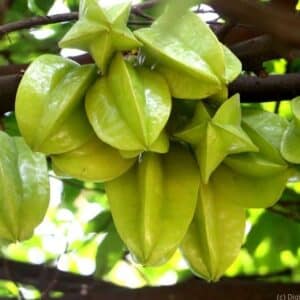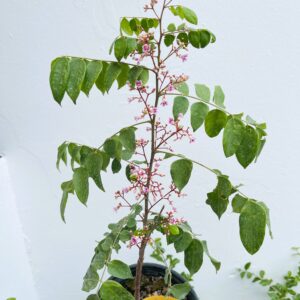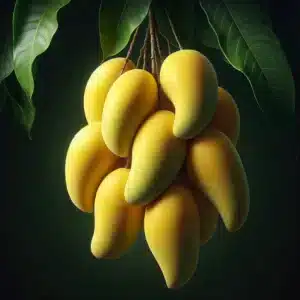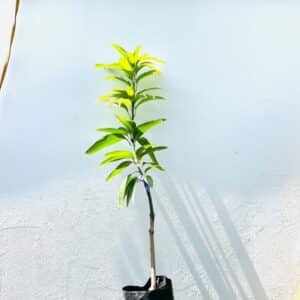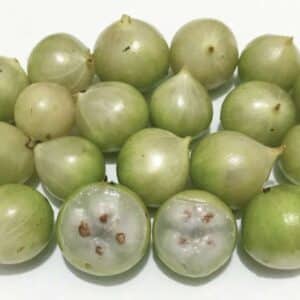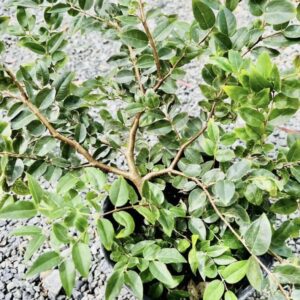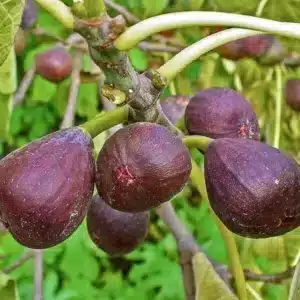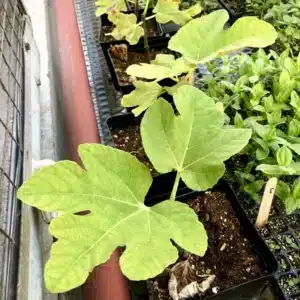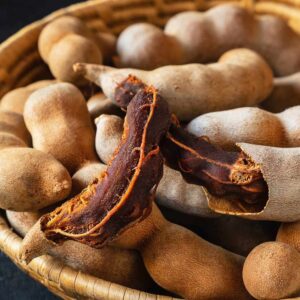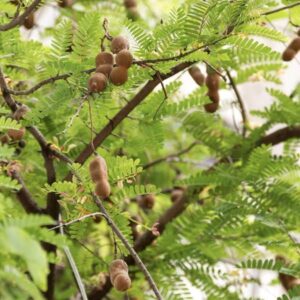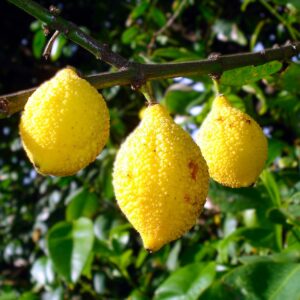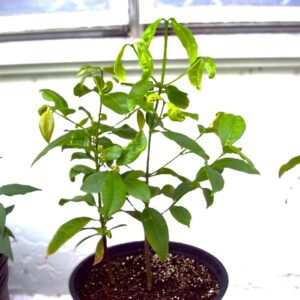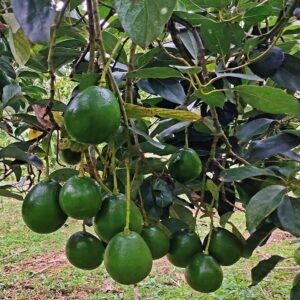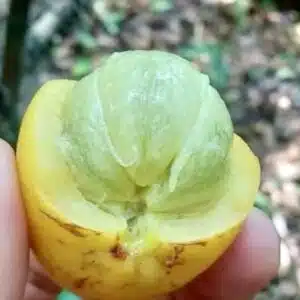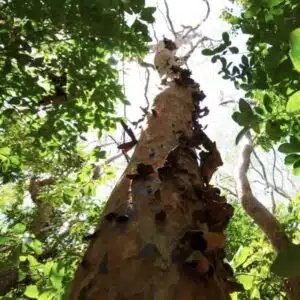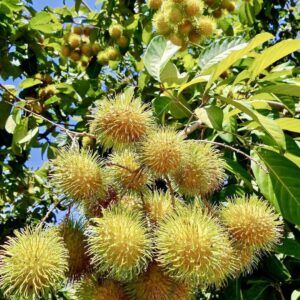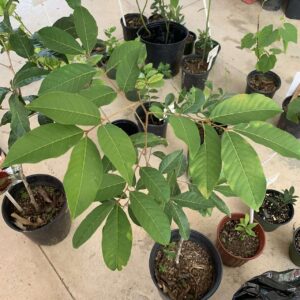Grafted Star fruit (Averrhoa carambola) live fruit tree 24″- 36″
Grafted Starfruit commonly known as grafted starfruit is a popular and highly productive variety of the starfruit tree. The process of grafting ensures that the tree retains desirable traits from the parent plant, such as superior fruit quality, consistent yield, disease resistance, and faster fruit production compared to trees grown from seed. This makes grafted starfruit trees a preferred choice for both home gardeners and commercial growers who want reliable, high-yielding trees.
White Jaboticaba (Plinia cauliflora) Tropical Living Fruit Tree 12” inches
White Jaboticaba Jaboticaba, also known as Brazilian grape tree, is a fruit tree native to Brazil that is now commonly grown in tropical and subtropical regions around the world. The tree produces small, grape-like fruits that are ligth green in color and have a sweet, juicy flesh. In this description, we will discuss how to plant and care for Jaboticaba trees, and some of the benefits they can provide.
An interesting fact about Jaboticaba trees is that they have a unique growth pattern. Unlike most fruit trees, which bear fruit on the ends of branches, Jaboticaba trees bear fruit directly on the trunk and larger branches. This means that the entire tree can be covered in fruit, creating a striking visual display. In addition, Jaboticaba trees have a relatively long lifespan, with some trees living for over 100 years. The combination of their unique growth pattern and longevity makes Jaboticaba trees a fascinating and rewarding addition to any garden or landscape.
Fig ( Ficus carica ) tropical live plant
Step into a world where nature's artistry takes center stage, where each leaf whispers stories of ancient traditions and the passing of generations. The Ficus Fig Tree (*Ficus carica*), a symbol of grace and abundance, invites you to immerse yourself in the timeless beauty of its foliage and the delectable sweetness of its fruits.
Sour Tamarind (tamarindus indica) live fruit tree 1-2 feet tall
Sour Tamarind, scientifically known as Tamarindus indica, is a tropical fruit-bearing tree renowned for its tangy and highly flavorful fruit. The tamarind tree is native to Africa but has been widely cultivated and naturalized in tropical and subtropical regions around the world. Tamarind fruit is used extensively in culinary, medicinal, and even industrial applications due to its sour taste, nutritional benefits, and versatility. The sour variety of tamarind is especially popular for adding acidity and complexity to dishes and drinks.
Sugar apple (Annona squamosa ) big live fruit tree 12”-24”
Savor the Sweetness of Sugar Apple Trees: Nature's Natural Candy Store
Get ready to embark on a delectable journey with the sugar apple tree, now available for online purchase! The sugar apple, scientifically known as Annona squamosa, is a tropical treasure that brings a taste of paradise right to your garden. With its scrumptious fruit, distinctive appearance, and cultural significance, the sugar apple tree is a must-have for any gardening enthusiast.
Grafted Avocado CABRE (Persea americana) tropical live fruit tree 12”-24”
The Grafted Avocado Cabre variety is a sought-after avocado known for its excellent fruit quality, consistent yields, and early production. Grafting ensures that the tree inherits desirable traits from the parent plant, such as superior flavor, size, and disease resistance, making the Cabre avocado a preferred choice for home gardeners and commercial growers alike.
Grafted Yellow Rambután (Nephelium lappaceum) exotic fruit live tree 24”-36”
Golden Rambutan, a rare and sought-after variety, is a prized addition to tropical fruit collections. This distinct cultivar, a variation of the traditional rambutan, is celebrated for its vibrant appearance and unique flavor.
Interesting Fact about Golden Rambutans:
Golden Rambutans are relatively rare compared to their red counterparts. Their unique color and slightly varying taste make them a sought-after delicacy among fruit aficionados. This distinct hue in the rambutan family adds an intriguing and exotic touch to fruit collections and culinary experiences.

